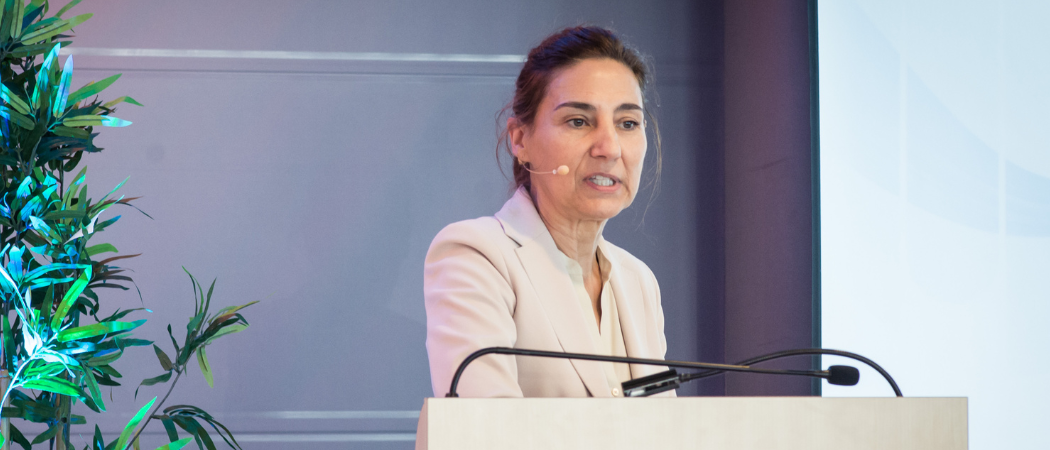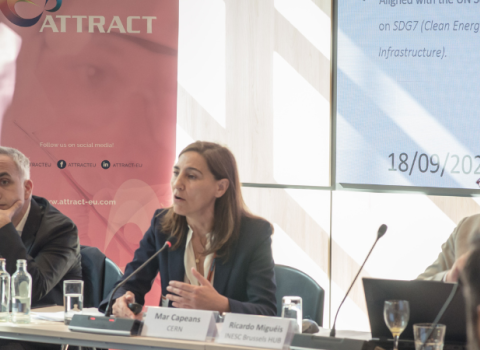In its new ‘Green Village’ initiative, the top physics lab hopes to help researchers and entrepreneurs speed testing and development of green technologies. ‘Our doors are open'

Mar Capeans, head of CERN’s Site and Civil Engineering Department
High-energy physics lab CERN has opened the doors to its campus near Geneva as a test-bed for breakthrough ideas in climate-friendly technologies.
The initiative, called CERN’s Green Village, invites research groups, companies, entrepreneurs and others with a well-developed green idea to test it out in practice on the lab’s huge network of buildings, roads and people. The technologies could be used to conserve energy, transport people, monitor pollution or address other sustainability problems. And the aim is to get good green ideas onto the market and into use as quickly as possible.
“Our doors are open. Come in. Test any solution or any technology we can use to make more sustainable the planet,” said Mar Capeans, head of CERN’s Site and Civil Engineering Department, speaking at a Science|Business climate conference in Brussels on September 19.
CERN’s underground particle accelerator is at the core of its scientific work, which has included finding the elusive Higgs Boson in 2013. But beyond its science, it has also spun out several valuable technologies – including the World Wide Web and hospital PET scanners. With CERN’s Green Village, it aims to repeat that practical side of its history with green technologies, and make its own operations more sustainable environmentally.
Several universities and other labs are testing green technologies on site, but CERN’s offer is unique given the size of its campus, the technical skill of its staff, the range of technologies developed on site, and its collaborative culture.
City scales
Its complex outside Geneva is like a city, with 667 buildings, 54 kilometres of road, 3,600 staff and 12,500 visiting scientists and engineers requiring several thousand vehicle movements a day into, out of and around the campus. And like a city, it shares many of the same energy, efficiency and waste problems. As a result, it began developing the Green Village idea in 2021, and has been working since then to get all the legal and technical details sorted out.
Its first Green Village project, recently approved, will be a three-year effort led by South Africa’s University of Witwatersrand, a collaborator in the ATLAS experiment at its primary accelerator system, to test out new a new, low-cost air-quality monitoring system – based partly on technology ATLAS already uses to register its underground particle collisions. Separately, CERN partners in its EU-funded ATTRACT deep-tech project are testing out 3D-printed “smart pipes” to monitor water quality, and drone systems to monitor air pollution.
To qualify for CERN’s Green Village testing, an idea has to be fairly well along in development – so-called Technology Readiness Levels 4 to 6, beyond proof of concept and requiring a demonstration in a real-world setting. The idea has to be focused on sustainability, whether in waste management, biodiversity in landscaping, “smart energy”, green mobility, urban analytics, environmental monitoring or office-space management, to name but a few of the CERN site’s challenges. It should also be feasible in a “reasonable timescale” in a city-like environment, focus on research collaboration rather than procurement, and comply with CERN’s internal health, safety, environmental and site access rules.
And then there’s money. For an idea like this to work, Capeans said, “you need the people, you need the infrastructure – but you also need the funding.” CERN and partner-organisations are seeking EU funding for the idea, and it welcomes research groups that have already won EU awards to test their ideas at the CERN campus. It is also open, Capeans said, to “dynamic collaborations with specific companies or other ecosystems.”
“We do the science, but we also work very, very closely with industry to develop the technologies we need to do science,” she said. “We can be seen as a lab for fundamental science, but also a very powerful research infrastructure developing breakthrough technology.”






 A unique international forum for public research organisations and companies to connect their external engagement with strategic interests around their R&D system.
A unique international forum for public research organisations and companies to connect their external engagement with strategic interests around their R&D system.